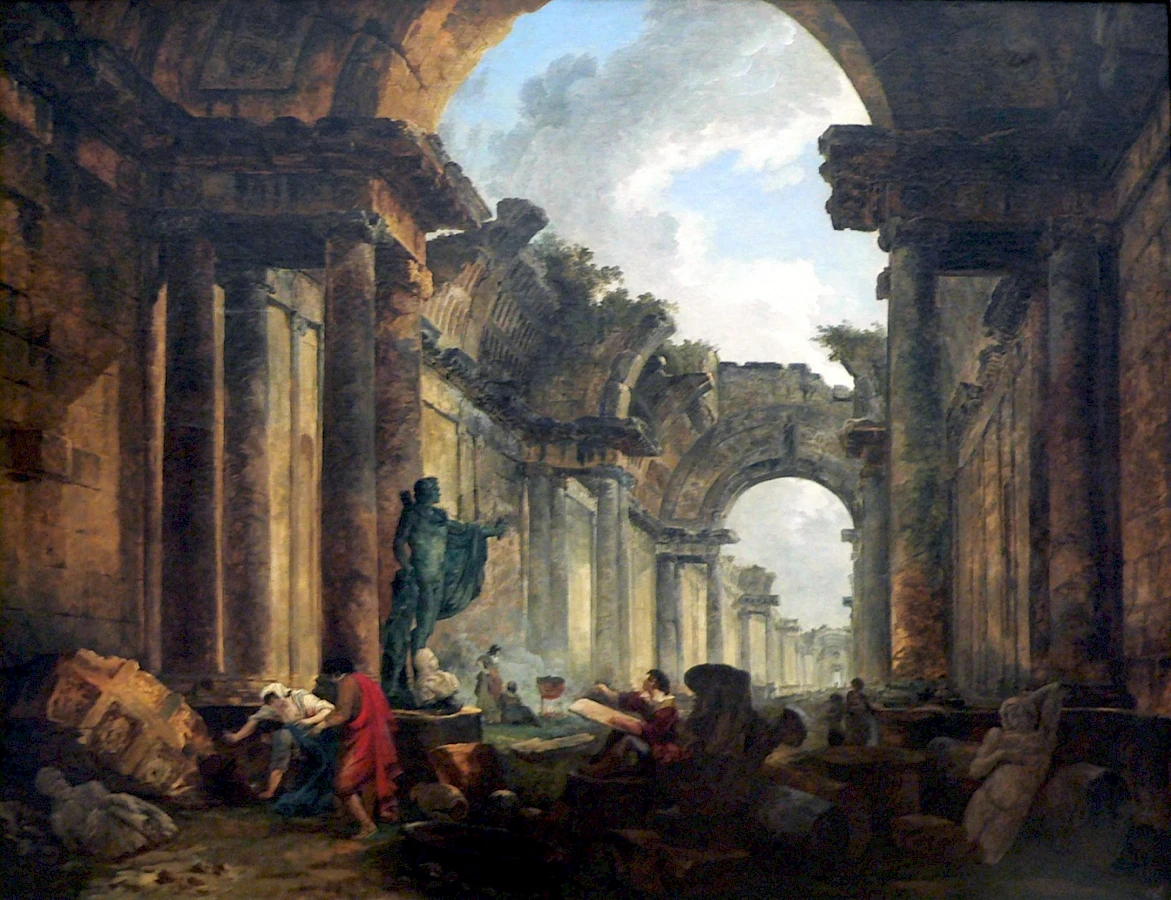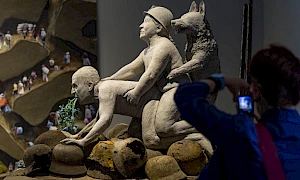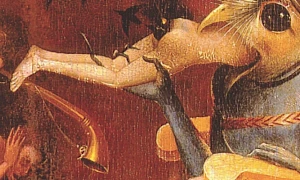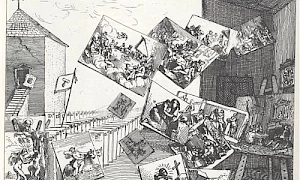Verifica dei poteri

Hubert Robert, Vue imaginaire de la grande galerie du Louvre en ruines, 1796, Musée du Louvre, Paris.
To be frank,1 I think the critical responses to the MACBA crisis that have used the accusation of censorship to analyse the situation are barking up the wrong tree. Censorship is one big undifferentiated whole, a buzz-word that blinds both those who use it and those towards which it is destined. Furthermore, the demonstrations of 11 January in France this year, a day that saw four and half million citizens come together to demonstrate against the murder of 17 human beings, cannot honestly be compared to this situation.
I seriously doubt that any British museum would welcome a three-dimensional effigy of the Queen being sodomised by a Welsh miner or a Scottish shepherd, or, for that matter, that any (public) museum in France would be prepared to exhibit an effigy of Jacques Chirac or François Hollande in a similar posture (each with local variants). This may come as a surprise in a country where, for 30 years, Charlie Hebdo has inflicted the most outrageously daring cartoons upon the figures of the successive presidents of the Republic, the pope, bishops etc. These caricatures were drawn with relentless ferociousness and joyfulness, to the delight of a small readership and the indifference of most of the population. But a drawing is not a naturalist sculpture, a magazine is not a museum, a press drawing is not a three-dimensional effigy exhibited in a public building. I can only imagine that the prudent silence of most of the European museum directors can be explained by this shared consciousness.
But I would like to take this opportunity to continue a discussion with the MACBA team during a research day in February. This might be a way to remember that, since its creation and without exception, the MACBA has been a place for free and informed debate.
In a brief and incisive text published on 20 March, Paul B. Preciado wrote: "Once again, the sovereign converts into a beast and declares a state of exception". Can the concepts and themes developed by Derrida and Agamben lend themselves to such miniaturisation? The authors were referring to the State and the Sovereign; can this be scaled down and applied by analogy to a particular institution, in this case the MACBA, without distortion? Is it the same power structure that pervades throughout all society, and therefore applies automatically to the museum?
In fact this type of reasoning forcefully reminds me of the French style of "institutional critique" in the 1970s: museums and schools are vehicles for domination, as such they reveal its mechanisms like a magnifying glass and ensure its reproduction. The people who run them are simultaneously despotic in their own territory and monkey or a valet towards those in power, dominating those who are dominated and dominated by those who dominate, etc.
I thought we had agreed in February about the obsolescence of this critical apparatus: in this age of global neo-liberal redeployment, a redeployment that impacts on everything, including museums and schools, a much more refined analysis of institutions is required. And that begins with an analysis of the institutional process itself which has always been postponed by previous generations, certain as they were that legal matters could only be a transparent mask of these same power relations. This probably explains why philosophers, historians and art historians have persistently regarded the criticism of institutionals out of bounds. On this subject, neither Derrida nor Agamben, nor a legal historian like Yan Thomas (whose research in fact inspired much of Derrida and Agamben's analysis), nor a filmmaker like Frederick Wiseman, have been heard. We have great difficulty in accepting that institutions are artefacts, that is to say artificial and fragile, set up with a very particular relation to time which is perpetuity. From this point of view, over centuries, the museum (which many wrongly continue to associate with its collections only) has mobilised an enormous apparatus of concepts and legal mechanisms each of which (we forget) was a conceptual conquest: regimes of inalienability of property, sustainability of resource allocation, legal entity, inalienability, etc., which have made the museum the ideal framework for modern normative spaces, a model for institutionalisation (indeed this explains its worldwide success, well beyond the colonial exportation of the model).
But what interests us first and foremost today is the relationship to time specific to the institution. Lawyers and philosophers of the eighteenth century Enlightenment applied the model of foundational property to museums: with perpetuity as their horizon. However fragile it is, however fragile and chaotic the beginnings, the museum has the vocation to continue in perpertuity. That is precisely what makes it so precious today.
In a world in turmoil with no defense against capitalist logics which are cyclically renewed, the institution and its specific temporality are bastions of resistance, strongholds to be defended.
Since its creation, the MACBA has been such a bastion. And in an exemplary manner. We all know that in a world dominated by merchandise, any theme, even the most "disturbing" at first, can be harnessed to commercial ends. But the time spent on nurturing and reflecting, on transmission is not profitable; this transmission mode known since the Renaissance by the Greek word "method" has no easily-defined added-value... Schools, art schools and universities in a state of crisis are witness to this all over the world.
That is why we require of museums that they play their role as institutions: that they give preference to the continuity of a series rather than one-shot scandalous exhibitions, to medium and long-term in-depth work rather than short term media effects. The success in the art world of themes such as "research", "archive", and that of the slogan "art as knowledge production" did not need any other rationale, any more than the creation, in several pioneering museums and art centres, of research and educational programmes which have renewed the issues and modalities and also the temporalities of exhibitions – and here I am obviously referring to PEI, the MACBA's Programa de Estudios Independientes.
We know that that permanence is what the political, commercial and media backers can't stand. Everything else is fertile hunting-ground for them. That is why they need scandals. This is the Trojan horse of these fragile strongholds called museums. This is the instrument for their destruction. At the MACBA, the Trojan horse was called (who could have invented that?) « Haute Couture 04 Transport ».
Last March I returned to MACBA for a 3 day colloquium which the museum was devoting to the fascinating exhibition Pasado inquieto. Narrativas y fantasmas de la exposición internacional de arte en solidaridad con Palestina, 1978. In this one same museum, "as ever", you could view four exhibitions of international quality and repute. Like many foreign visitors, I have always wondered how, with such a small team, it was possible to bear such a load? What was the personal price to pay for such multi-tasking? Above all in a political environment plagued by nationalism, localism, austerity and right-wing issues? What stratagems did they employ? What tactical alliances had they wisely forged? A phrase by Franco Fortini in La verifica dei poteri came back to mind: "We must be candid like foxes, clever like doves, cover the tracks, the identitites. Poison the wells". Have they forgotten?



